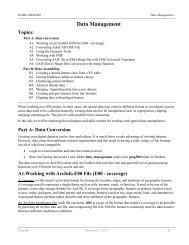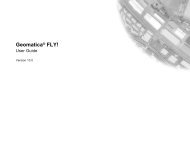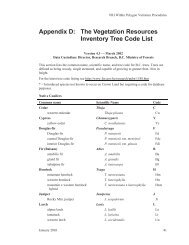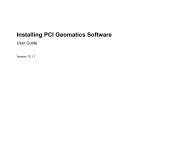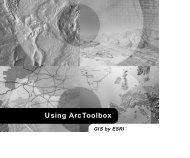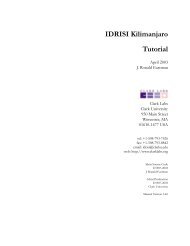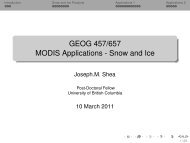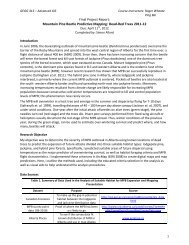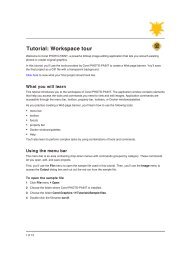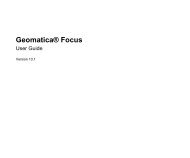Understanding Map Projections
Understanding Map Projections
Understanding Map Projections
You also want an ePaper? Increase the reach of your titles
YUMPU automatically turns print PDFs into web optimized ePapers that Google loves.
GNOMONIC<br />
PROPERTIES<br />
Shape<br />
Increasingly distorted from the center; moderate<br />
distortion within 30 degrees of the center point.<br />
Area<br />
Distortion increases with distance from the center;<br />
moderate distortion within a 30 degree radius of the<br />
center.<br />
Direction<br />
Accurate from the center.<br />
Distance<br />
No line has an accurate scale, and the amount of<br />
distortion increases with distance from the center.<br />
The central meridian is 0°, and the latitude of origin is 90° S.<br />
DESCRIPTION<br />
This azimuthal projection uses the center of the earth<br />
as its perspective point. All great circles are straight<br />
lines, regardless of the aspect. This is a useful<br />
projection for navigation because great circles<br />
highlight routes with the shortest distance.<br />
PROJECTION METHOD<br />
This is a planar perspective projection viewed from<br />
the center of the globe. The projection can be any<br />
aspect.<br />
POINT OF TANGENCY<br />
A single point anywhere on the globe.<br />
Polar aspect—North Pole or South Pole.<br />
Equatorial aspect—Any point along the equator.<br />
Oblique aspect—Any other point.<br />
LINEAR GRATICULES<br />
All meridians and the equator.<br />
Scalar Distortion for Polar Aspect<br />
Degrees from Center (°) 15.0 30.0 45.0 60.0<br />
Meridian Distortion (%) 7.2 33.3 100.0 300.0<br />
Latitude Distortion (%) 3.5 15.5 41.4 100.0<br />
LIMITATIONS<br />
This projection is limited by its perspective point and<br />
cannot project a line that is 90 degrees or more from<br />
the center point; this means that the equatorial<br />
aspect cannot project the poles and the polar aspects<br />
cannot project the equator.<br />
A radius of 30 degrees produces moderate distortion,<br />
as indicated in the table above. This projection<br />
should not be used more than about 60 degrees<br />
from the center.<br />
USES AND APPLICATIONS<br />
All aspects—Routes of navigation for sea and air.<br />
Polar aspect—Navigational maps of polar regions.<br />
Equatorial aspect—Navigational maps of Africa and<br />
the tropical region of South America.<br />
60 • <strong>Understanding</strong> <strong>Map</strong> <strong>Projections</strong>




